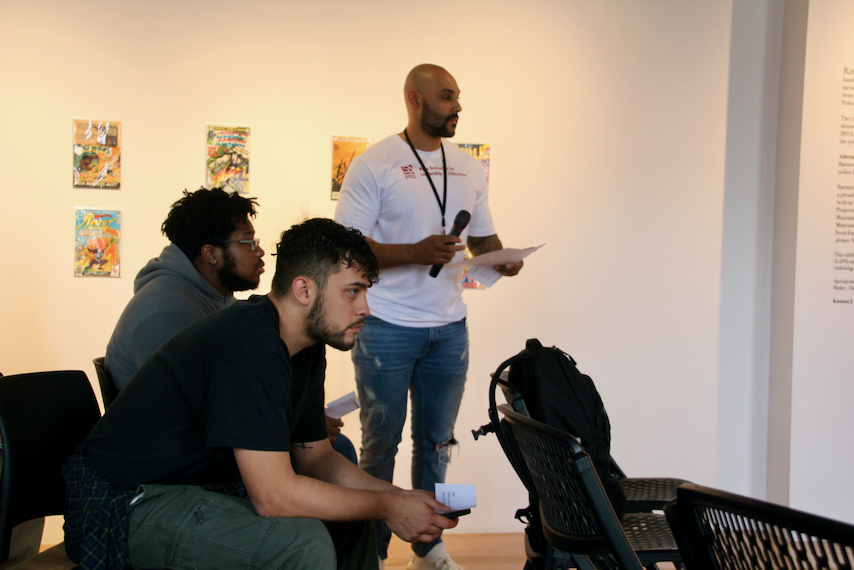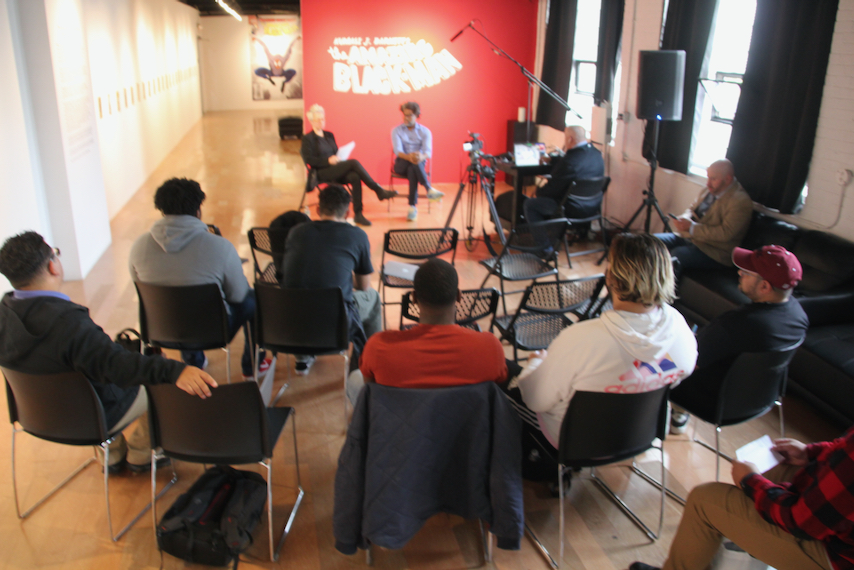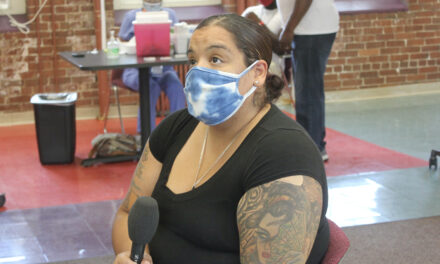Baltimore artist Kumasi J. Barnett spoke to Springfield Technical Community College students this week during two events at the Amy H. Carberry Fine Arts Gallery at STCC.
Barnett’s exhibition, “The Amazing Black-Man: Murcan Ways,” is on view at the gallery through Nov. 10. The work, according to Sondra Peron, associated professor and gallery coordinator, is “transformed by the space.”
Barnett meticulously paints directly over old copies of comic book covers, changing their narratives into reflections on contemporary events and searing, sometimes painful, critiques of real social and political issues, including racism, fake news, and political corruption. Beloved superheroes like “The Hulk” are transformed into “The Media’s Thug” and the classic Spider-Man red suit is replaced by an all-new, equally iconic dark-skinned superhero with a gray hoodie, “The Amazing Black-Man,” who battles police brutality and systemic racism.
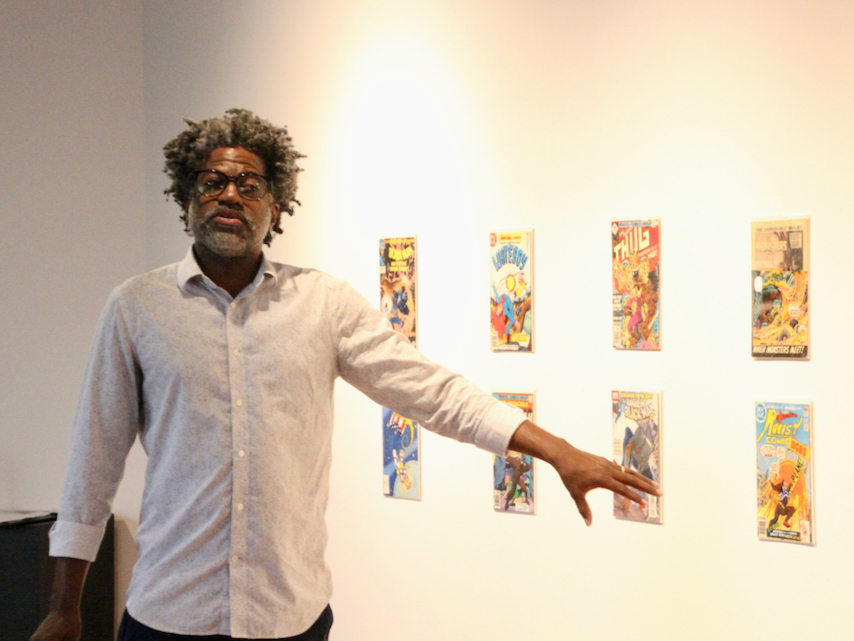
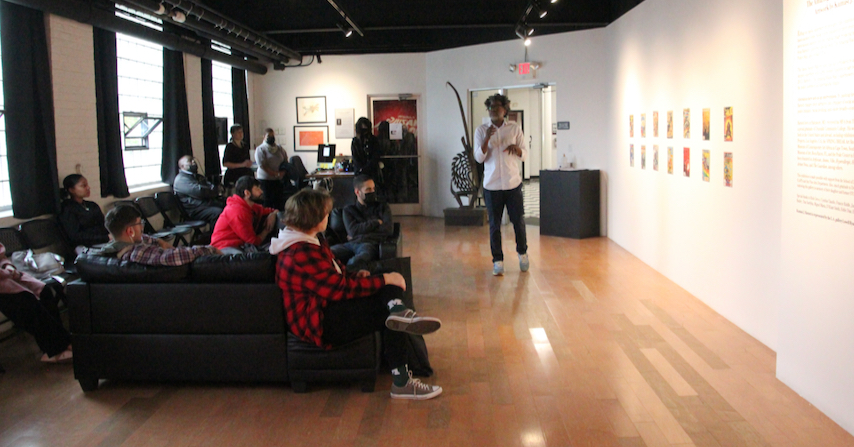
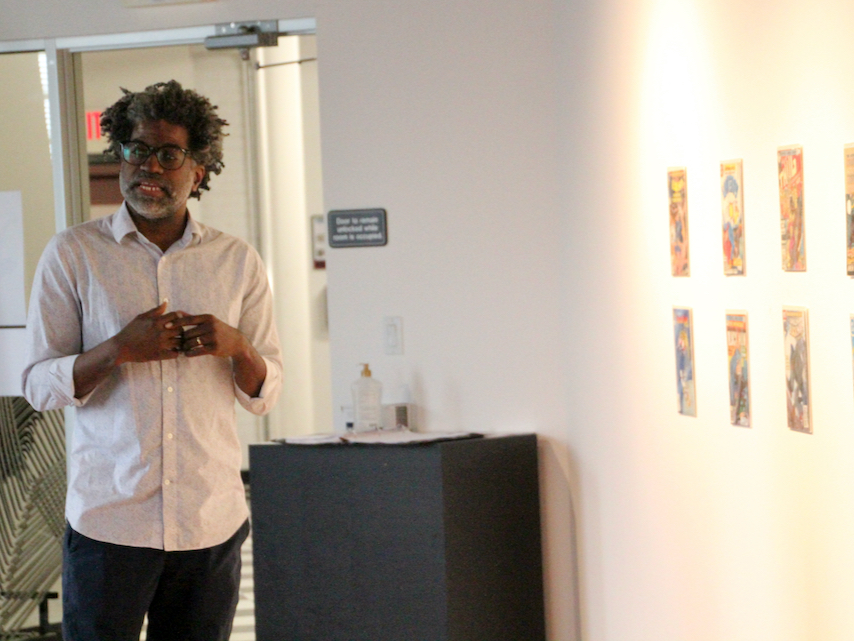
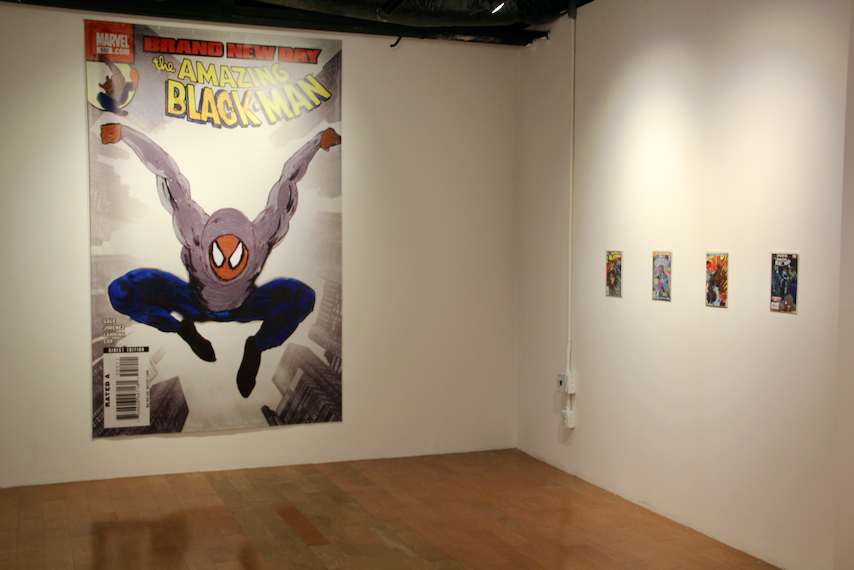
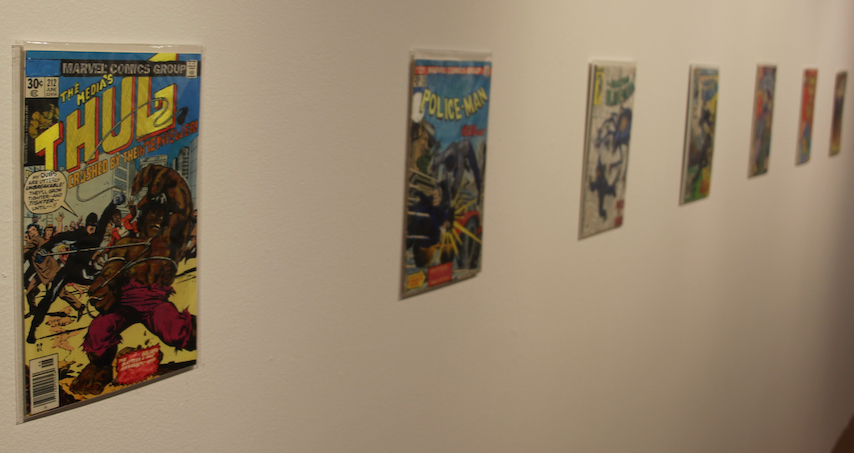
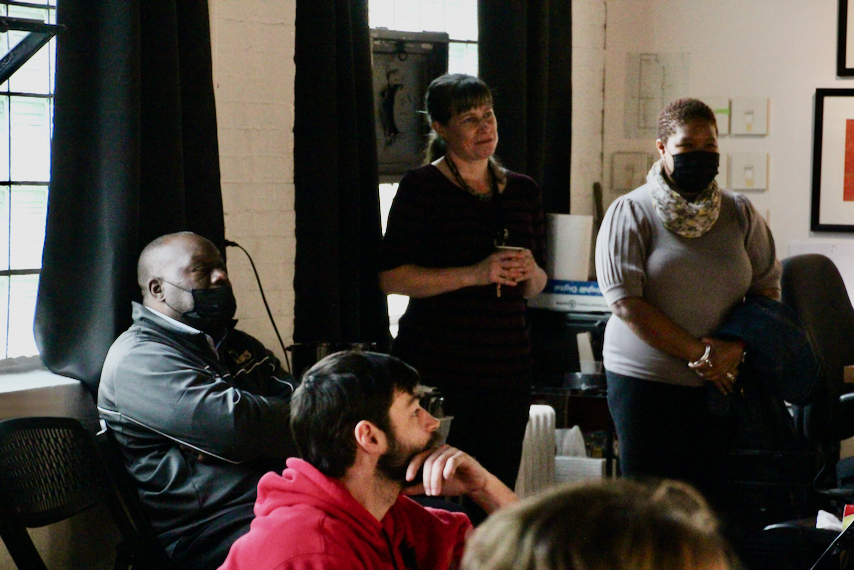
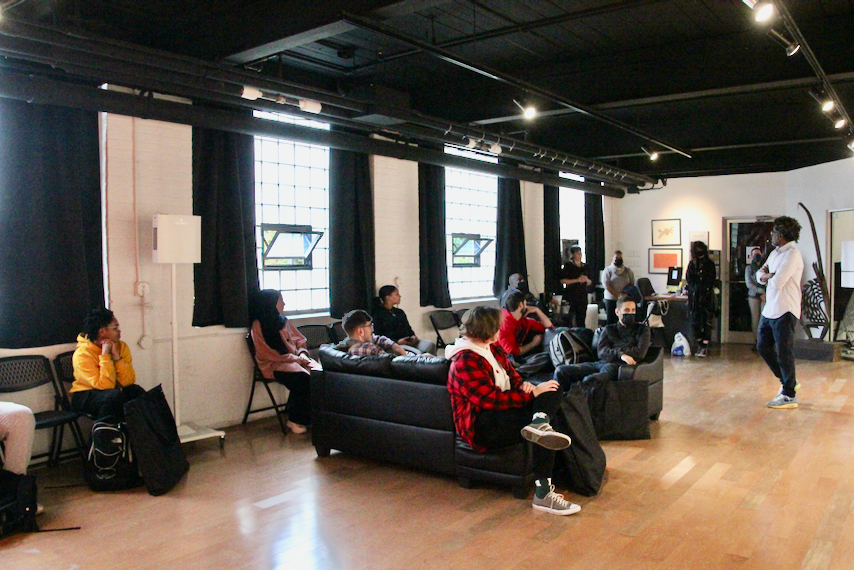
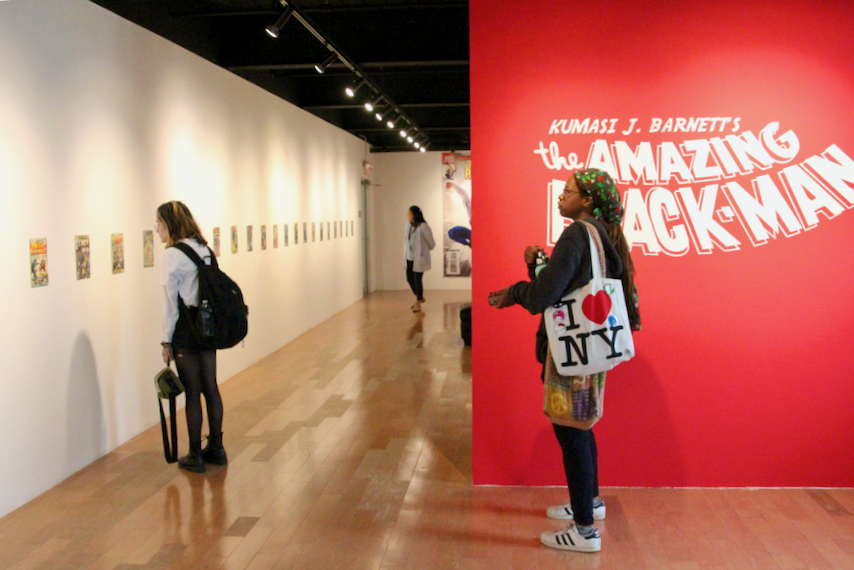
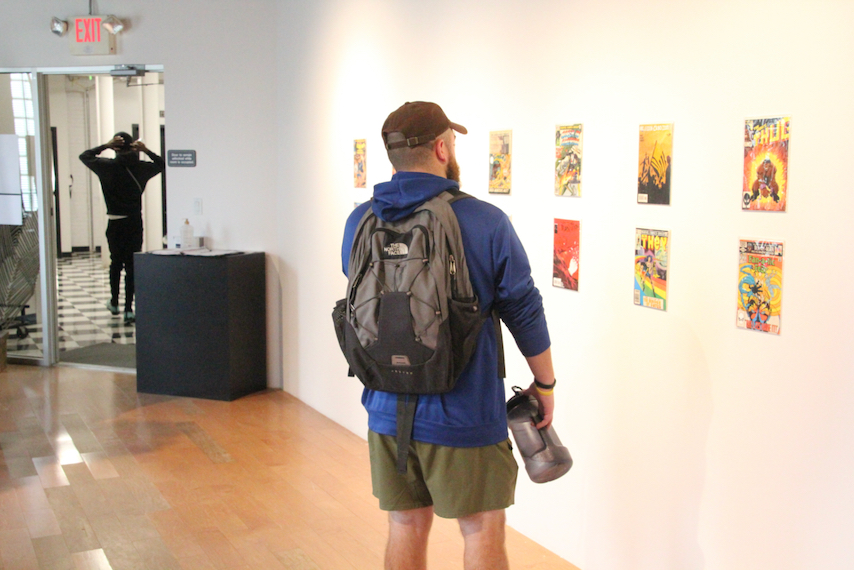
On Thursday, he gave an artist talk in the gallery to STCC students enrolled in fine arts courses and the general public. Barnett said he started the artwork after Freddie Gray, an African-American man, died after being transported by police in Baltimore.
“I think of them as American stories,” he said of the art on display at the gallery.
Students said they enjoyed his presentation and the exhibit.
“It was interesting. I like to see how you can turn a comic book into something else, like inspiration,” said Carl Phoite, who is studying Architectural Design and Management. Alison Velez, who is in general studies, said, “I love that he puts his own take onto something that is already seen or portrayed, and he makes it his own instead of just leaving it how it is. He’s kind of showing people other sides of America and what it’s like for people of color.”
Barnett was back in the gallery on Friday to join Carberry Conversations with M.I.L.E. peer mentors, students and Peron.
The students engaged and reflected upon the meaning and significance of Kumasi Barnett’s work, particularly the Amazing Black-Man. Miguel Maria, director of M.I.L.E., said, “I was pleased to hear that students were eager to visit the gallery and subsequent art exhibitions.”

